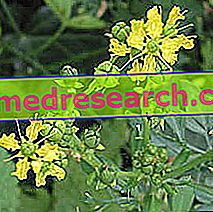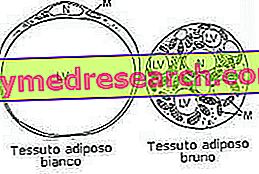
Scientific name
Ruta graveolens
Family
Rutaceae
Origin
Europe
Used Parts
Drug given by the leaves and dried aerial parts
Chemical constituents
- Essential oil;
- alkaloids;
- Flavonoids (rutin);
- cumarine;
- furanocoumarins;
- Piranocumarine;
- Lignans;
- Vitamins (P);
- Tannins.
Ruta in Erboristeria: Properties of the Ruta
Rue leaves, infused, were mainly used for tonic, stomachic, diaphoretic and emmenagogue activities.
The use of rue in therapy was largely abandoned due to its high toxicity, which at high doses makes it abortive, but above all a narcotic poison.
At the moment, in fact, its main uses only concern the homeopathic sphere.
Biological activity
Anti-microbial, anti-exudative and spasmolytic properties are ascribed to rue. More in detail, the anti-exudative action seems to be due to the alkaloids contained in the plant; while spasmolytic activity is attributable to both alkaloids and coumarin derivatives.
However, just because of the presence of coumarins, rue also has photosensitizing activity; besides being able to exert an abortive effect.
It is precisely because of the aforementioned negative effects that the use of the plant has not obtained official approval for any type of therapeutic indication.
However, from a recent study (2016) conducted on animals, it emerged that rue leaf extract has the potential to reduce gastrolesivity and the formation of peptic ulcers induced by indomethacin, a famous non-steroidal anti-inflammatory drug (NSAIDs) ).
However, despite the results obtained, before being able to approve similar medical applications of the plant, more in-depth studies are certainly necessary.
Rue in folk medicine and homeopathy
In traditional medicine, rue is used as a remedy for the treatment of menstrual disorders and as a contraceptive remedy. In addition, the plant is also used in folk medicine for the treatment of skin and oropharyngeal inflammation, toothache, ear pain, cramps, diarrhea, dyspepsia, intestinal parasites, fever and infectious diseases.
Rue is also widely used in homeopathic medicine, where it can be found in the form of granules, oral drops, eye drops, mother tincture and ointment.
In this context, the plant is used in cases of sprains, dislocations, tendonitis, epicondylitis, pain caused by falls, periarthritis, joint pain, back pain, pubic pain, neuralgia, eye strain, spasms of the lower eyelid, loss of vision, fatigue and restlessness.
The dose of homeopathic remedy to be taken can be different between one individual and another, also depending on the type of disorder that needs to be treated and according to the type of preparation and homeopathic dilution that you want to use.
Side effects
Following the intake of rue or its preparations, photosensitization episodes are possible due to the presence of coumarins.
Furthermore, cases of photodermatosis have been reported even after skin contact with the leaves of the plant.
In the event of an overdose, however, symptoms such as nausea, vomiting, dizziness, epigastric pain, renal and hepatic damage, tremors, spasms, depression, fainting and, in the most serious cases, even death, can arise.
Contraindications
Avoid taking during pregnancy, in case of nephritis or hypersensitivity to one or more components.
Pharmacological Interactions
- not known
Warnings
Today the rue is no longer used for the important side effects.



